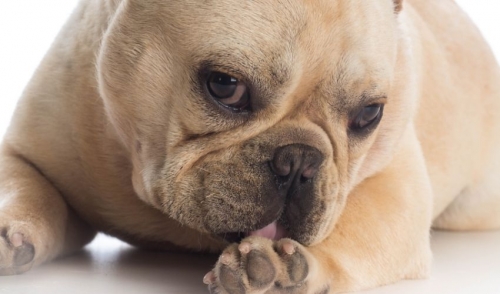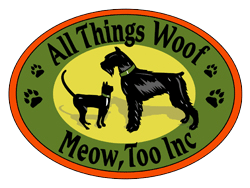{article.name}
Reasons Your Dog Licks Excessively – And What to Do About It

- Share this:
- Share on Facebook
- Pin on Pinterest
- Tweet on Twitter
Licking is one way a dog senses its world, and occasional licking is perfectly normal behavior and nothing to be concerned about. When your dog licks excessively, however, it can be an indication of underlying problems, or the licking itself could cause problems and injuries. Understanding why your dog licks can hep you identify any potential difficulties and redirect your dog’s behavior.
How Much Licking Is Too Much?
Licking is normal behavior for a dog to groom itself, express affection, and taste objects, and some casual licking can be comforting and soothing to the animal. Too much licking, however, is when the dog never stops, even when prompted or distracted. Dogs that lick excessively may focus on one area, such as a paw, their muzzle, or their genitals, or they may lick objects such as walls, carpeting, or furniture.
Excessive licking can indicate a range of health problems, including allergies, skin irritations, arthritis, joint or muscle soreness, nausea, or overall anxiety. Over time, too much licking can lead to hair loss and skin infections, in addition to the underlying problems that precipitated the licking.
Stopping Excessive Licking
The key to stopping your dog’s excessive licking is to identify and treat the cause of the behavior. Note where and when your dog licks, how prolonged the behavior is under different conditions, and whether you are able to distract your dog from licking. Consult your veterinarian for a proper diagnosis and to investigate any underlying health considerations that may be prompting the licking. To help keep your dog from licking excessively…
- Practice proper grooming and regular brushing. This will help keep skin healthy and remove pests, dander, and allergens that may be causing itchiness.
- Wipe your dog’s paws with a damp cloth after walks or outdoor playtime to remove irritating allergens, especially on delicate pads or between toes.
- Choose different walking routes or outdoor play areas to avoid the worst allergens that could be triggering your dog’s excessive licking.
- Use appropriate flea, tick, and pest treatments, including medicated shampoos, to minimize pests that could be causing itchiness or allergic reactions.
- Take steps to sooth your dog’s anxiety, such as minimizing loud noises, offering comforting toys, or spending more bonding time together.
- Offer your dog a chewing toy or treat puzzle to distract it from excessive licking, or play different games and activities to use up nervous energy.
- Clean any surfaces your dog licks. An old spill, accumulated sweat, or other contaminant might be tasty to your pet and causing the licking.
- Adjust your dog’s diet to help soothe food allergies, dry skin, or nausea, all of which could be causes of excessive licking.
- Ensure your dog has the proper dental and mouth care, as soft tissue injuries or gum infections could cause licking as your dog attempts to soothe the hurt.
- Address any arthritis or joint issues with proper medication or assistance such as smaller steps to reach a couch or a heated bed pad to alleviate aches.
What Not to Do
Most importantly, do not punish your dog for excessive licking. The dog is only trying to soothe itself or communicate distress, and punishments will be ineffective at addressing the cause of the behavior. Dogs can lick for many reasons, and it can be a complex process to thoroughly understand your dog’s licking. Instead, be patient as you try to discover why your dog licks excessively, and once you find the cause, take steps to ease your pet’s discomfort. When the discomfort is gone, the undesirable behavior will also be gone.

Comments